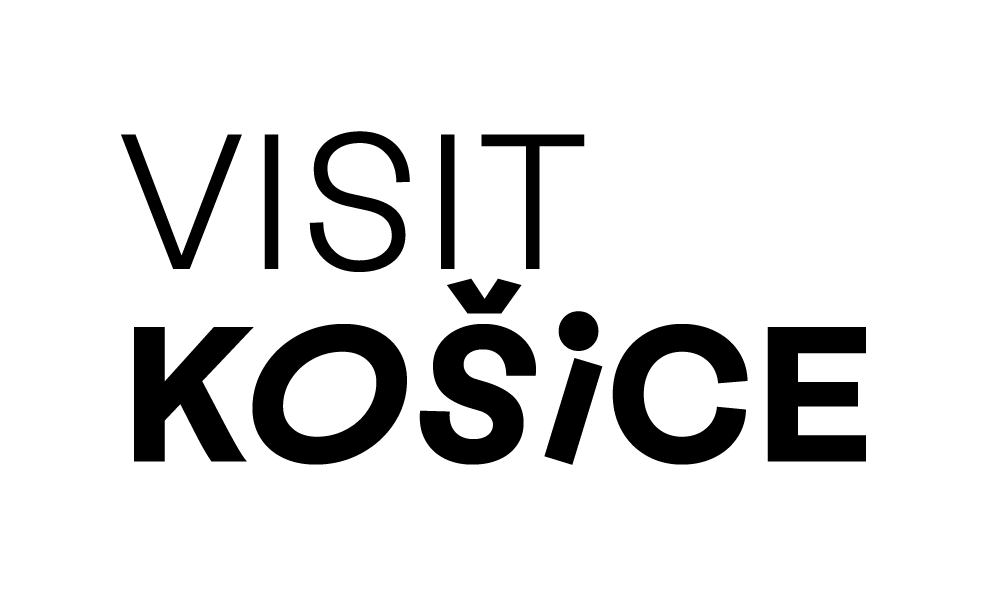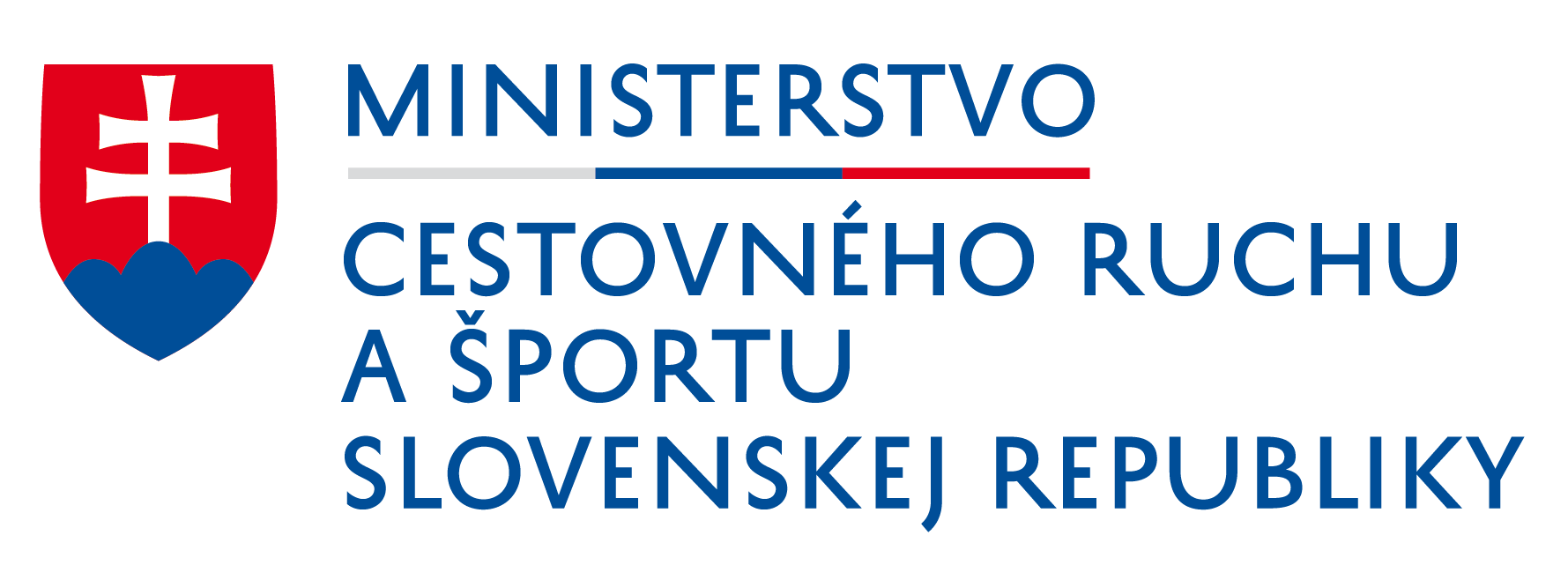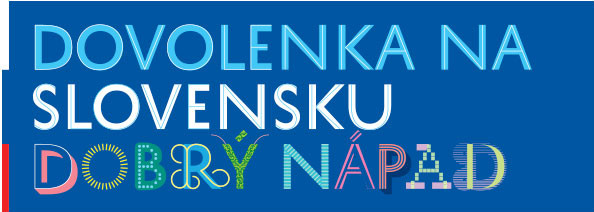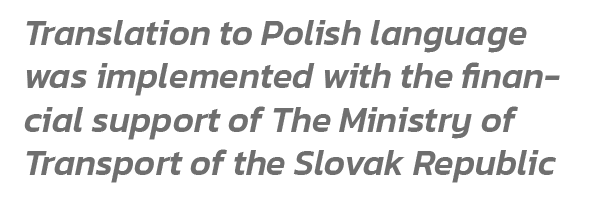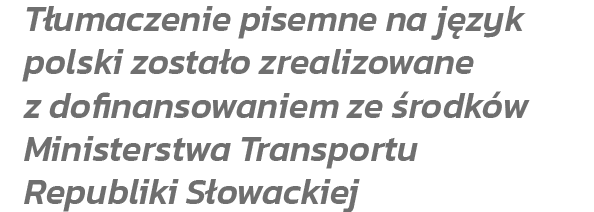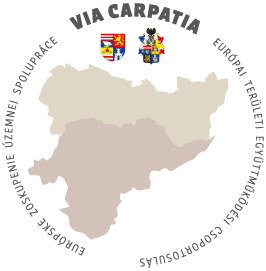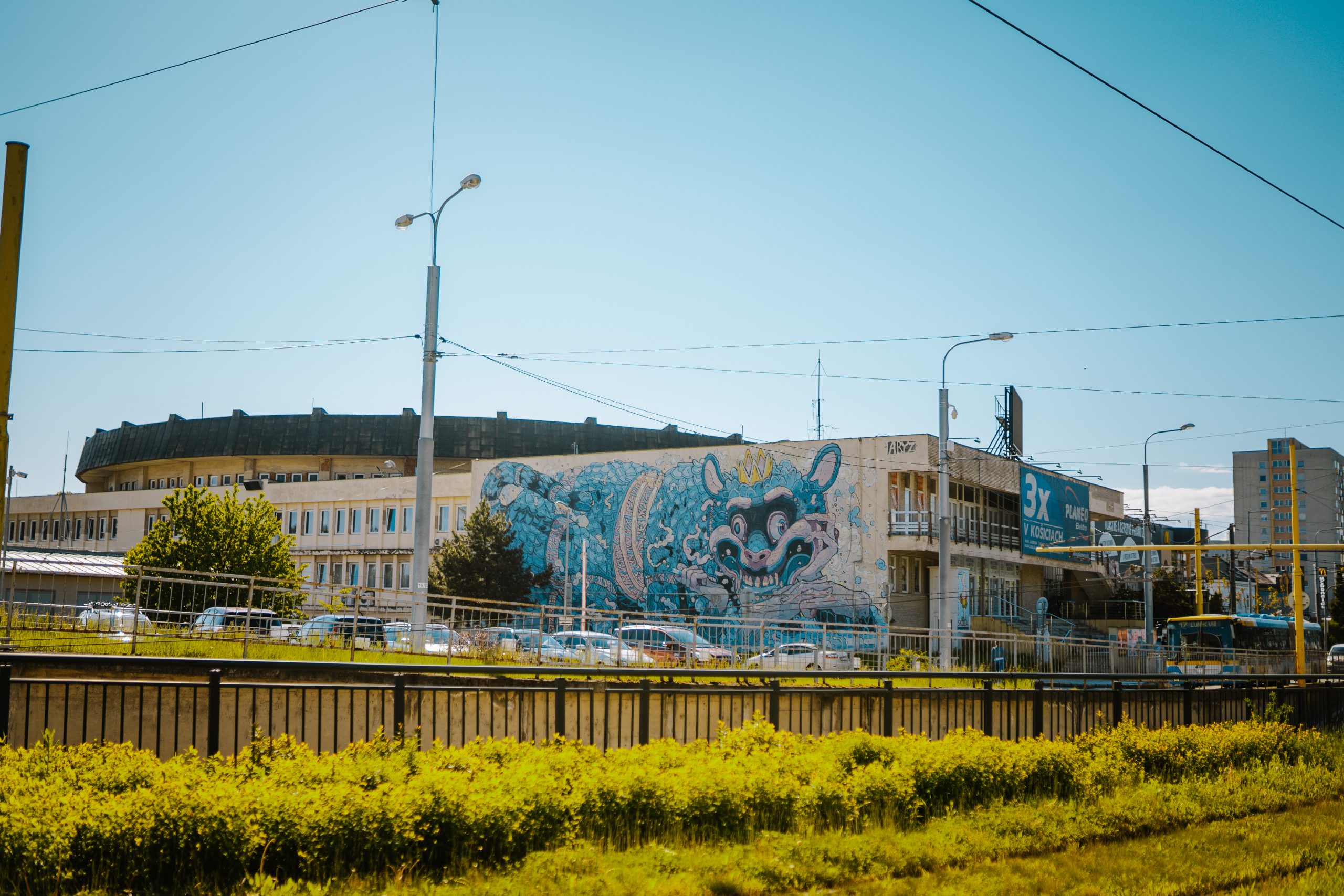
The city as gallery
Street Art
Košice brings a view of contemporary art in the exteriors of the city. Look at the open-air exhibition in the east of the country – the Gallery in the City, where mural, graffiti, advertising typography, are the WORKART and the inhabitant of the city, its visitor, is a consumer. Become a visitor to the city’s open-air gallery without a ticket and a red carpet. Observe how exhibits are formed in public spaces.

Mural
Although such an art is perceived as new, the truth is that it has existed since time immemorial. Just recall the cave paintings in Altamira, Spain or Lascaux Caves, or the messages for politicians on the walls of the dwellings in Rome, the recently discovered thermal field in Pompeii with a cartoon menu of the then Wednesday food stall or Renaissance sgraffiti in Italy – as typical decorative style elements that occur on the facades of buildings and later also in interiors.
Mural and graffiti enliven the gloomy grey facades of residential blocks of flats, refresh the shabby corners of the centre, and cheer up boring passages. Art in the city is also a statement reflecting social events, development, issues of the time, nostalgia, dream, escape. It elevates, makes laugh, asks questions, offers an answer and delves into philosophy.
Street Art Communication is a stubborn gathering of urban adventurers who believed in 2008 that a city was a space that was growing or shrinking in direct proportion to the feeling of pride in it. Since 2011, the SAC has been managing the largest city mural gallery in Slovakia – OCG – Open City Gallery – it is an exhibition space on the facades of residential houses. The gallery consists of monumental paintings by the greats of contemporary world masalism. The exhibited artworks are scattered across the city of Košice. Currently, the SAC point is in the database of Tabačka Kulturfabrik on Gorkého Street 2 in Košice.
OMG (Open Mural Gallery) map: https://sacsac.org/
See 12 murals in Košice in one day: https://www.invisiblemag.sk/12-muralov-za-jeden-den-v-kosiciach/


Santiago – Collector of discarded words
A street artist signed as pump, steamer or by the name of Santiago. He conceived Košice facades and areas around busy sidewalks as blank pages of a book where he writes his stories. A minimalist, in a sentence or two, he authentically reflects and specifically captures the social mood of the city, focusing on love and cheerful banalities. He does not avoid serious philosophical topics, which he characteristically captures in simple bon mots. Whether it is art or vandalism, the fact that many of Santiago’s inscriptions in Košice have not been overpainted also decides. So does the public consider them funny and profound thoughts? Notice the dancing letters.
The heart is just a muscle
It’s enough for you that I am and I can’t make it without you
Angels deceive… they have it in their job description
Send a threatening text message to No. 1166
So how do homeless people are without hope?
Love is also infectious
Over time, we are soft on claims. And the ground is a floating board (maybe).
Facebook site: https://www.facebook.com/Santiago-zberate%C4%BE-zahoden%C3%BDch-slov-315877157191/


Advertising typography
From the point of view of the visual culture of the city, this space consists of a wide range of elements, of which advertising typography is specific and intentionally unmissable. Precisely because of the personal relationship of the authors Samo Čarnoký and Rado Sinčák to public space and writing, the publication NEÓNA was out together – a typographic syllabary which maps the occurrence of nostalgic advertisements and their remains, retro inscriptions, as well as advertising smog in 26 East Slovak cities. Košice included. A special chapter is devoted to neon advertising which has undergone a significant development since its premiere at the Expo in Paris in 1912, but we are still looking forward to its spectacular effect, which adds an atmosphere to cities, albeit in the form of eco-friendly LED advertisements.
https://www.facebook.com/knihaNEONa/?ref=page_internal
Advertising typography
Kitchen utensils (Alžbetina Street)
Paper (Mlynská Street)
Marathon (Peace Marathon Square)
Remains of Mladost (Main Street)
Mercury (to B. Nemcová)



Mural
Although such an art is perceived as new, the truth is that it has existed since time immemorial. Just recall the cave paintings in Altamira, Spain or Lascaux Caves, or the messages for politicians on the walls of the dwellings in Rome, the recently discovered thermal field in Pompeii with a cartoon menu of the then Wednesday food stall or Renaissance sgraffiti in Italy – as typical decorative style elements that occur on the facades of buildings and later also in interiors.
Mural and graffiti enliven the gloomy grey facades of residential blocks of flats, refresh the shabby corners of the centre, and cheer up boring passages. Art in the city is also a statement reflecting social events, development, issues of the time, nostalgia, dream, escape. It elevates, makes laugh, asks questions, offers an answer and delves into philosophy.
Street Art Communication is a stubborn gathering of urban adventurers who believed in 2008 that a city was a space that was growing or shrinking in direct proportion to the feeling of pride in it. Since 2011, the SAC has been managing the largest city mural gallery in Slovakia – OCG – Open City Gallery – it is an exhibition space on the facades of residential houses. The gallery consists of monumental paintings by the greats of contemporary world masalism. The exhibited artworks are scattered across the city of Košice. Currently, the SAC point is in the database of Tabačka Kulturfabrik on Gorkého Street 2 in Košice.
OMG (Open Mural Gallery) map: https://sacsac.org/
See 12 murals in Košice in one day: https://www.invisiblemag.sk/12-muralov-za-jeden-den-v-kosiciach/


Santiago – Collector of discarded words
A street artist signed as pump, steamer or by the name of Santiago. He conceived Košice facades and areas around busy sidewalks as blank pages of a book where he writes his stories. A minimalist, in a sentence or two, he authentically reflects and specifically captures the social mood of the city, focusing on love and cheerful banalities. He does not avoid serious philosophical topics, which he characteristically captures in simple bon mots. Whether it is art or vandalism, the fact that many of Santiago’s inscriptions in Košice have not been overpainted also decides. So does the public consider them funny and profound thoughts? Notice the dancing letters.
The heart is just a muscle
It’s enough for you that I am and I can’t make it without you
Angels deceive… they have it in their job description
Send a threatening text message to No. 1166
So how do homeless people are without hope?
Love is also infectious
Over time, we are soft on claims. And the ground is a floating board (maybe).
Facebook site: https://www.facebook.com/Santiago-zberate%C4%BE-zahoden%C3%BDch-slov-315877157191/


Advertising typography
From the point of view of the visual culture of the city, this space consists of a wide range of elements, of which advertising typography is specific and intentionally unmissable. Precisely because of the personal relationship of the authors Samo Čarnoký and Rado Sinčák to public space and writing, the publication NEÓNA was out together – a typographic syllabary which maps the occurrence of nostalgic advertisements and their remains, retro inscriptions, as well as advertising smog in 26 East Slovak cities. Košice included. A special chapter is devoted to neon advertising which has undergone a significant development since its premiere at the Expo in Paris in 1912, but we are still looking forward to its spectacular effect, which adds an atmosphere to cities, albeit in the form of eco-friendly LED advertisements.
https://www.facebook.com/knihaNEONa/?ref=page_internal
Advertising typography
Kitchen utensils (Alžbetina Street)
Paper (Mlynská Street)
Marathon (Peace Marathon Square)
Remains of Mladost (Main Street)
Mercury (to B. Nemcová)








